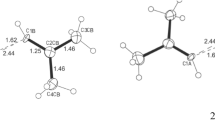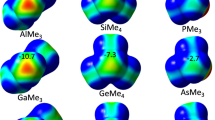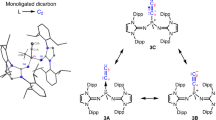Abstract
WITH the object of throwing light on the mechanism of three-carbon tautomerism, we have studied the equilibration of vinylacetic and crotonic acids in the presence of 1.05 mols of sodium hydroxide in dilute heavy water at 100° C. As a check, we have also examined the behaviour of butyric acid under the same conditions. The isotopic ratio in both the recovered solvent and the water obtained by combustion of the residual sodium salts has been determined by a flotation method accurate to one part per million of density; the necessary purifications were carried out without loss of water, thus avoiding the possibility of isotopic fractionation.
This is a preview of subscription content, access via your institution
Access options
Subscribe to this journal
Receive 51 print issues and online access
$199.00 per year
only $3.90 per issue
Buy this article
- Purchase on Springer Link
- Instant access to full article PDF
Prices may be subject to local taxes which are calculated during checkout
Similar content being viewed by others
Author information
Authors and Affiliations
Rights and permissions
About this article
Cite this article
IVES, D., RYDON, H. Mechanism of Three-Carbon Tautomerism. Nature 136, 476–477 (1935). https://doi.org/10.1038/136476c0
Issue Date:
DOI: https://doi.org/10.1038/136476c0
Comments
By submitting a comment you agree to abide by our Terms and Community Guidelines. If you find something abusive or that does not comply with our terms or guidelines please flag it as inappropriate.



